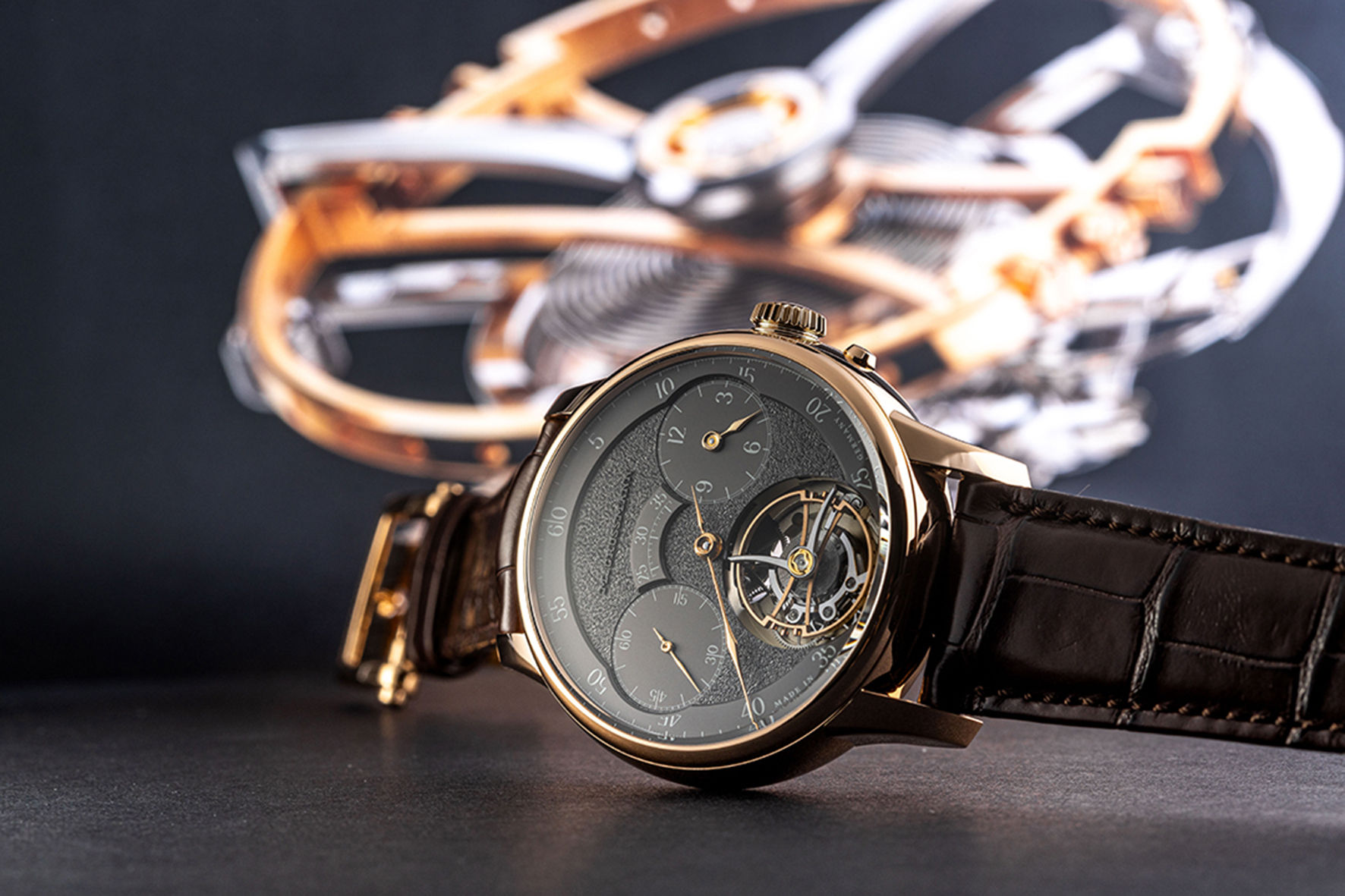Moritz Grossmann’s Christine Hutter wants to create unique timepieces


Christine Hutter, the founder and CEO of German fine watch brand Moritz Grossmann, puts a lot of herself into her work. This is quite literally so when it comes to the Glashütte-based manufacture’s tourbillon timepieces.
The tourbillon is a high-end mechanism that constantly rotates the balance wheel and escapement – the heart of a timepiece – to counter the effects of gravity. However, only a handful of tourbillons feature a stop-seconds function, which enables it to be brought to a complete stop, for the most precise time-setting. A Moritz Grossmann tourbillon is able to do so – and it does so using a tiny brush made of over 20 short strands of Hutter’s hair.
One of some 20 Moritz Grossmann patents, this unusual technical solution replaces the lever that is usually used to bring the tourbillon to a stop upon contact. Taking the concept further, clients can customise this brush using their own hair or those of their loved ones. Highly innovative yet elegant in its simplicity, this feature is characteristic of Moritz Grossmann watches – and of the 19th-century Glashütte watchmaker after whom Hutter named her brand.

In May, Hutter sat down with Prestige for an interview during a visit to Singapore, during which she also presented the Hamatic Astral Sincere Platinum Jubilee Edition, a rose-gold timepiece created for the 70th anniversary of Sincere Fine Watches. Dressed in a cream-coloured ensemble, she shared more about the inspiration for her brand. Moritz Grossmann had penned an essay “The Construction of a Simple but Mechanically Perfect Watch” in 1869. “That’s our philosophy,” says Hutter.
Trained in Munich as a watchmaker, German native Hutter had formerly worked in marketing, sales and distribution for various brands. Following stints with Glashütte Original and A. Lange & Söhne, Hutter gained a deep appreciation of the heritage of Glashütte watchmaking and its pioneers like Moritz Grossmann. With the help of her family, she secured the rights to the watchmaker’s name and started her company in 2008.
It took time to get things off the ground. “I started alone, from my kitchen table. I only had a letterbox in Glashütte,” says Hutter. “It was only a few months later that I opened an office. And six months after that, I had my first employee, a watchmaker, and we started to develop some movements.” Today, the team is 55-strong and the brand has its own manufacture in Glashütte, the heart of German watchmaking.
The brand’s tagline is “Schönstes Deutsches Handwerk”, or “the most beautiful German craftsmanship”. “We want to make something that is completely new,” says Hutter. This refers to both the technical aspects and the finishings of her timepieces. Focused on handcraft and quality, the company produces just 350 of its timepieces a year.
Inspired by a 19th-century hammer mechanism designed by watchmaking legend Abraham Breguet, Moritz Grossmann’s Hamatic self-winding system is unique. Unsurprisingly, this signature movement powers the Hamatic Astral Sincere Platinum Jubilee Edition, which also features a shimmering blue dial made of goldstone. Unlike most modern self-winding movements that use a rotor, the Hamatic features an openworked oval weight that, with each wrist movement, swings slightly from side to side to power the watch, rather like a pendulum. While Breguet’s design was not widely used because of its susceptibility to shocks, Moritz Grossmann’s modern-day update is a vastly improved take.

Hutter elaborates, “Everybody else uses a rotor or micro-rotor for their self-winding movements. We didn’t want to make a movement that everybody is using. There was a development period of more than three years. It wasn’t easy, because if it were, other brands would also be doing it.”
The finishings on her watches, too, are executed to the highest level. “Everything is done by hand. The words on our movements are engraved by hand. We do the finishing on the smallest details – for example, we polish every tooth of a ratchet wheel.”
One Moritz Grossmann signature feature is its watch hands, which are produced by two in-house specialists. This is a rare practice even in high horology; most brands do not produce their own hands.
It takes a hand-maker an entire day to create the three hands for each watch. Each long, slim indicator is cut out of a piece of metal, then filed and polished. Some are flamed to a specific violet-brown hue that is a signature of the brand. At its narrowest, each is just 0.1mm thick. With a smile, Hutter says, “If you made the hand any thinner, you wouldn’t be able to polish it because it would break too easily.”
While discerning collectors have become more familiar with the brand, which has been exclusively distributed by Sincere Fine Watches here since 2021, it still remains slightly under the radar. That’s just how Hutter likes it. “The maximum number of watches we aim to produce a year is 1,000,” she says, when asked about her long-term goals.
Her dream, she says, is to keep producing timepieces at this high level of quality. “Our clients range between 20 and 90 years old. There is no particular demographic. They are simply people who understand the technical qualities and craftsmanship of our watches.”
(Top image: Christine Hutter, CEO of Moritz Grossmann, Moritz Grossmann)
This article was first published in Prestige Singapore